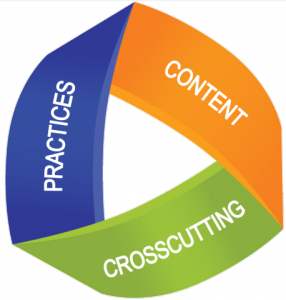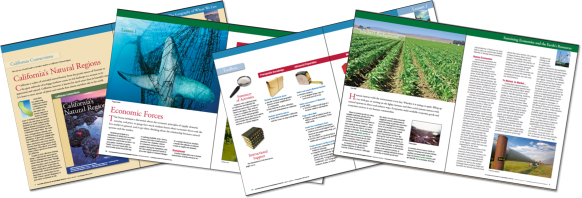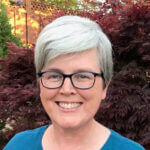 The first time I visited America was when I was just out of high school and I spent the summer in Mt. Kisco, New York. Until then, I’d lived in two villages—Chirnside in the Scottish Borders and Rosedale Abbey in the North Yorkshire Moors—both with a population of less than 1,300 people. My trip was via a student cultural exchange program called Camp America where students from the UK spent the summer working in American summer camps.
The first time I visited America was when I was just out of high school and I spent the summer in Mt. Kisco, New York. Until then, I’d lived in two villages—Chirnside in the Scottish Borders and Rosedale Abbey in the North Yorkshire Moors—both with a population of less than 1,300 people. My trip was via a student cultural exchange program called Camp America where students from the UK spent the summer working in American summer camps.
I met my cohort in London and we all flew over together. There were about 50 of us and on arrival at JFK we were met by our guide who took us into Manhattan on a bus, booked us into a hotel, and then let us loose for the evening. I wandered into a deli to order something to eat. The line was out the door and I stood there listening to customers yelling across the counter ordering their food. I remember noticing how quickly people were speaking to each other, maybe 3 times faster than I spoke at the time. To speed things up even more they just dropped final consonants (wan for want , callin for calling), and words no longer had an “r” in the middle of them (mawning for morning). I thought of Ms. Westwood, my German teacher, and her nagging me about my improper use of the glottal stop—she’d have had a field day in the deli running around correcting everyone!
, callin for calling), and words no longer had an “r” in the middle of them (mawning for morning). I thought of Ms. Westwood, my German teacher, and her nagging me about my improper use of the glottal stop—she’d have had a field day in the deli running around correcting everyone!
Fast-forward 30 years, nearly 20 of which I’ve spent in the Bay Area, and I don’t even notice American accents anymore. I do have a lasting love of New York City though. It’s my favorite place after the Bay Area. These days I’m a lot less likely to notice dropped consonants and a lot more likely to notice the alphabet soup of acronyms we use in the sector I work in: education.
Here’s an exchange I had at STEM conference last week with a science coach. In fact, there’s your first one “STEM” (Science, Technology, Engineering, and Mathematics). There are even variations on STEM. Interested in being inclusive of the arts? Then it’s STEAM. Or inclusive of the environment? Then it’s eSTEM. I guess arts and the environment would be eSTEAM.
Anyway, back to my conversation:
Me (while standing at an exhibit table): Hi, have you used the EEI?
Science Coach: I haven’t used it but some of my teachers have. Is it aligned with NGSS? Also, how well does it map to the EQuIP rubrics?
Me: Yes, we’re in the process of producing NGSS correlations. Some are online now and the reminder will be posted soon. The correlations for CCSS are complete and are available now. We’ve also started to explore how the content maps to the rubrics.
Science Coach: Will the NGSS correlations cover the SEPs, the CCs, and the DCIs?
Me: Yes, we definitely address the SEPs, the CCs, and the DCIs, they wouldn’t be very useful correlations if we didn’t address them [laughs].
Science Coach: Yes, obviously [laughs].
Me: Are you familiar with the EP&Cs?
Science Coach: Yes, I’ve heard of them, are they part of NGSS?
Me: We’re working hard to get them included in the California Science Framework, so, yes, in a way they will be part of NGSS.
Science Coach: You mean the Framework for K–12 Science Education by the NRC?
Me: No, the revised CDE Science Framework. It’s a different document with a similar name.
Science Coach: As if things aren’t confusing enough.
Me: Exactly.
If you understood the entire conversation above bravo—go to the head of the class!
We recently had a board meeting at Ten Strands and the final attachment in our board packet was a list of acronyms and their meaning. We only had two hours, after all, and it would have taken over three if we had to say the full version of each one!
 Seriously though, the conversation I had with the science coach represents a huge change in science instruction in California. All teachers in California who teach science will have to change their approach to science teaching. The biggest impact will be felt by elementary and middle school teachers, as many elementary school teachers have not taught very much science in well over a decade, focusing instead on English language arts and mathematics. Also, for middle school teachers the California Department of Education recommends taking an integrated approach to science when most middle school teachers have emphasized one discipline, e.g., 6th grade Earth Science. The new integrated approach “provides a transition from elementary to high school, aligns with Common Core State Standards (CCSS), builds within and across grade levels, balances complexity and quantity at each grade level, and integrates engineering appropriately.”
Seriously though, the conversation I had with the science coach represents a huge change in science instruction in California. All teachers in California who teach science will have to change their approach to science teaching. The biggest impact will be felt by elementary and middle school teachers, as many elementary school teachers have not taught very much science in well over a decade, focusing instead on English language arts and mathematics. Also, for middle school teachers the California Department of Education recommends taking an integrated approach to science when most middle school teachers have emphasized one discipline, e.g., 6th grade Earth Science. The new integrated approach “provides a transition from elementary to high school, aligns with Common Core State Standards (CCSS), builds within and across grade levels, balances complexity and quantity at each grade level, and integrates engineering appropriately.”
Let me unpack my conversation with the science coach and explain where all this change is coming from and why. In June 2010, the Common Core State Standards (CCSS) for English language arts and mathematics were published. Since then 43 states, the District of Columbia, Department of Defense Education Activity, and four territories have adopted them. Based on the apparent success of the CCSS initiative, a similar project was launched for science. The Carnegie Corporation of New York funded a two-step process to 1) to request that the National Research Council (NRC) develop a framework for K–12 science education and 2) that the framework be used by Achieve, Inc. to develop the Next Generation Science Standards (NGSS). Twenty-six states participated in the development of the standards and so far eleven states, including California, have adopted them.
The overall goal of the framework is “to ensure that by the end of 12th grade all students have some appreciation of the beauty and wonder of science; possess sufficient knowledge of science and engineering to engage in public discussions on related issues; are careful consumers of scientific and technological information related to their every day lives; are able to continue to learn about science outside school; and have the skills to enter careers of their choice, including, but not limited to, careers in science, engineering and technology.”
The committee who worked on the framework recommended that science education in K-12 be built around three major dimensions:
- Scientific and engineering practices (the SEPs in my conversation above).
- Crosscutting concepts (CCs) that unify the study of science and engineering through common applications across fields.
- Disciplinary core ideas (DCIs) in four areas: physical sciences; life sciences; earth and space sciences; and engineering, technology, and applications of science.
My conversation with the science coach was simply me asking him if he had heard of a curriculum we support, the Education and Environment Initiative (EEI) and he was asking if the EEI can be used effectively as teachers transition from the old 1998 science standards to the Next Generation Science Standards. I was telling him that with the support of good alignment documents that pay attention to the three major dimensions (the SEPs, the CCs, and the DCIs) that, yes, the EEI is a good transitional resource. The EP&Cs I referenced are California’s adopted Environmental Principles and Concepts that my colleague Ariel wrote about in her blog post recently. And the EQuIP rubrics were created by Achieve to help educators see if their existing instructional resources are a good match for the new science standards and where the gaps might be.
So how do you help teachers move from a theoretical understanding of the changes to a practical one? One way is to collaborate with teachers in a professional learning environment. Our work in that area will be the subject of my next blog post.


